Summer 2020
Why Did the Pipevine Caterpillar Cross the Road?
by Jackie Howland
It’s summer and the pipevine caterpillars are on the move! If you like to walk in lower Bidwell Park, you’ve probably seen them busily marching across the road. I live next to the Lindo Channel and they cross the road here, too. So why do these caterpillars cross the road? Seriously, I know the answer is more complicated than “to get to the other side.” What are they seeking that they can’t find where they were? I haven’t found a definitive answer to my question yet, but I can make an educated guess.
Hi. My name is Jackie and I’ve been volunteering at Gateway since August 2018. I’m so sad the museum is closed right now, but I’ve been talking with the director about doing some writing for them, so now seems like the perfect time. Just so you know, I have a degree in English, and I taught college English for a little more than ten years. I’ve also done a bit of professional writing, so I have some experience in this area. I’ve also been an enthusiastic amateur science buff since my early 20’s (a very long time ago!) and I love learning how and why natural things work the way they do. This is such a great area for nature too; we’re all so lucky to live here.
While we might think pipevine butterflies are just a local species, they’re actually found in many areas of the US, and all of them feed on a member of the pipevine family. Our local variety of this plant is called a Dutchman’s pipe because the flowers look like the pipe the Dutch used hundreds of years ago for smoking tobacco. Pipevines have a natural defense against enemies – foul tasting acids. Pipevine caterpillars are immune, however, and actually retain the acids in their bodies as defense against their own enemies. This holds true for every stage of their development. The caterpillars and butterflies advertise their toxicity, or perhaps just nasty taste, with their coloration. Whether orange, red, or black, the critters are not palatable to most predators.
The one stage that doesn’t follow the pattern of this coloration is the chrysalis one. And my research into the question of what the caterpillars are seeking has led me to conclude, it’s mostly about this very stage! I spotted these chrysalises on my house.
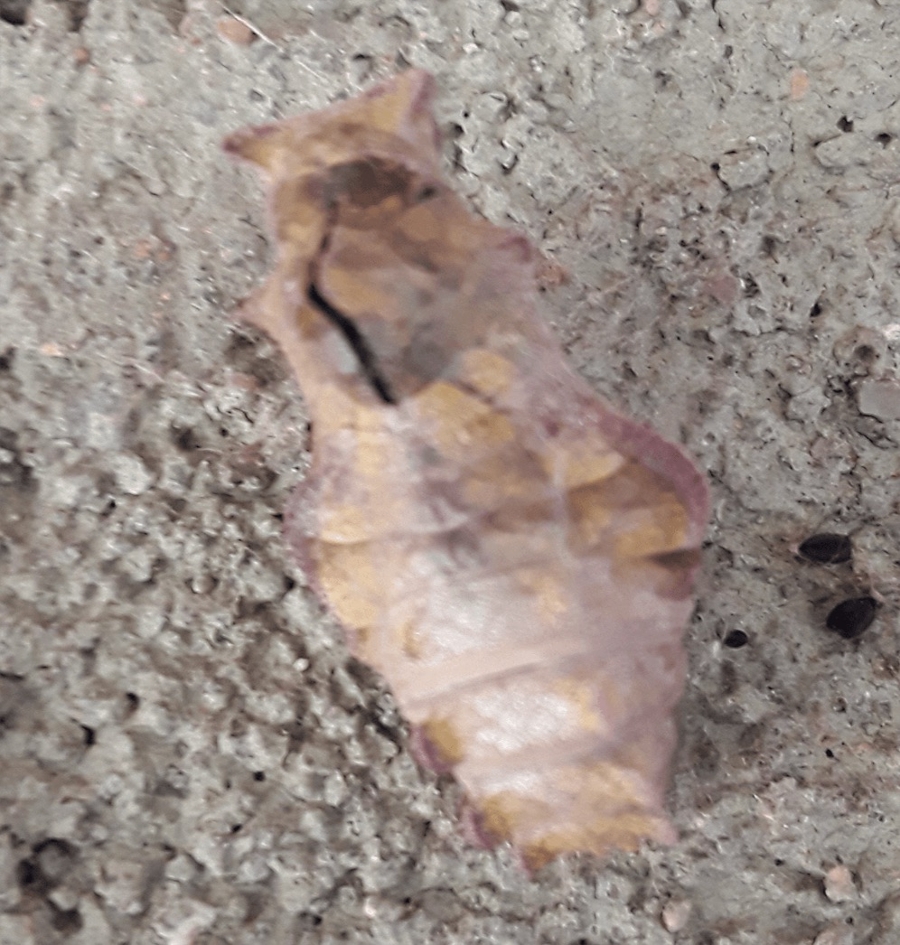
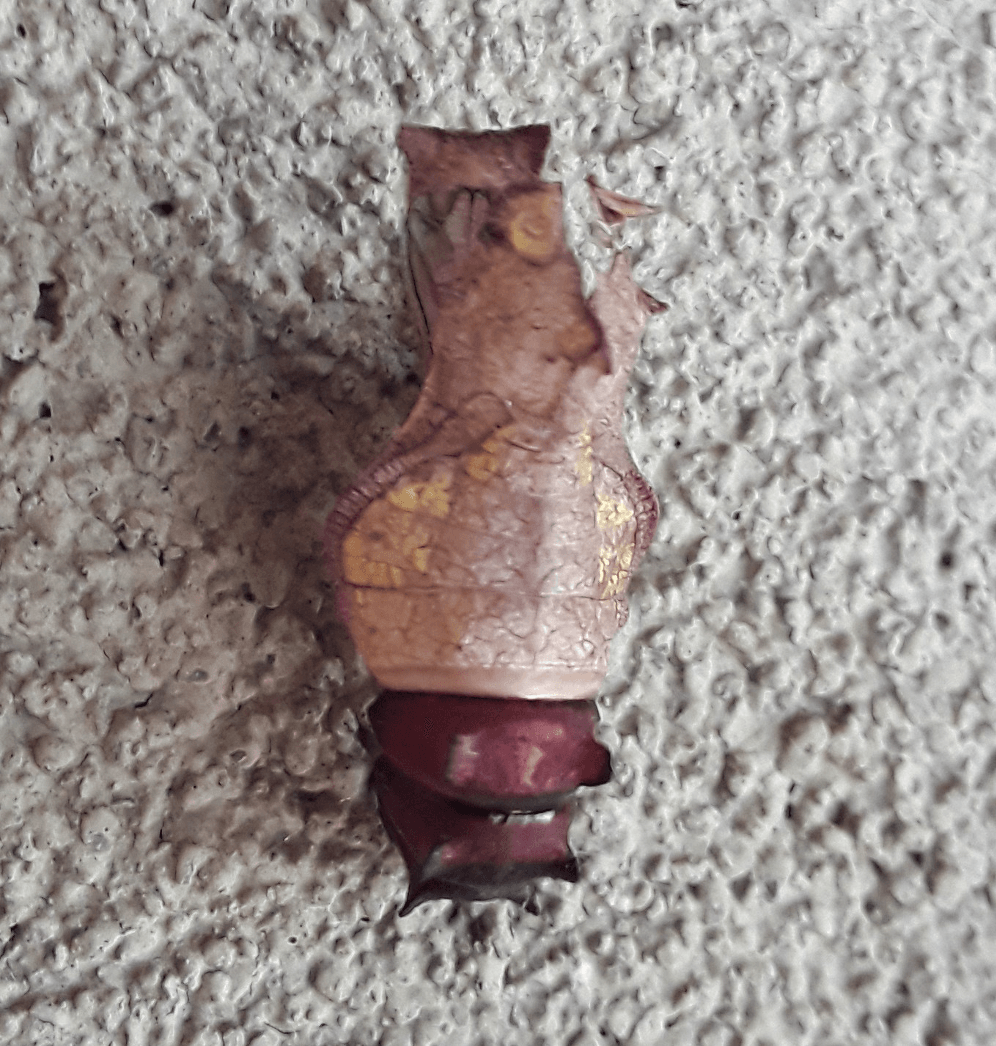
Notice the mostly drab brown coloration and leaf-like appearance of these chrysalises. Also, if you look carefully, you can see the splits, which means the butterflies have emerged. I was lucky enough to see one within moments after this happened. Its wings were not fully pumped up as these pictures show.
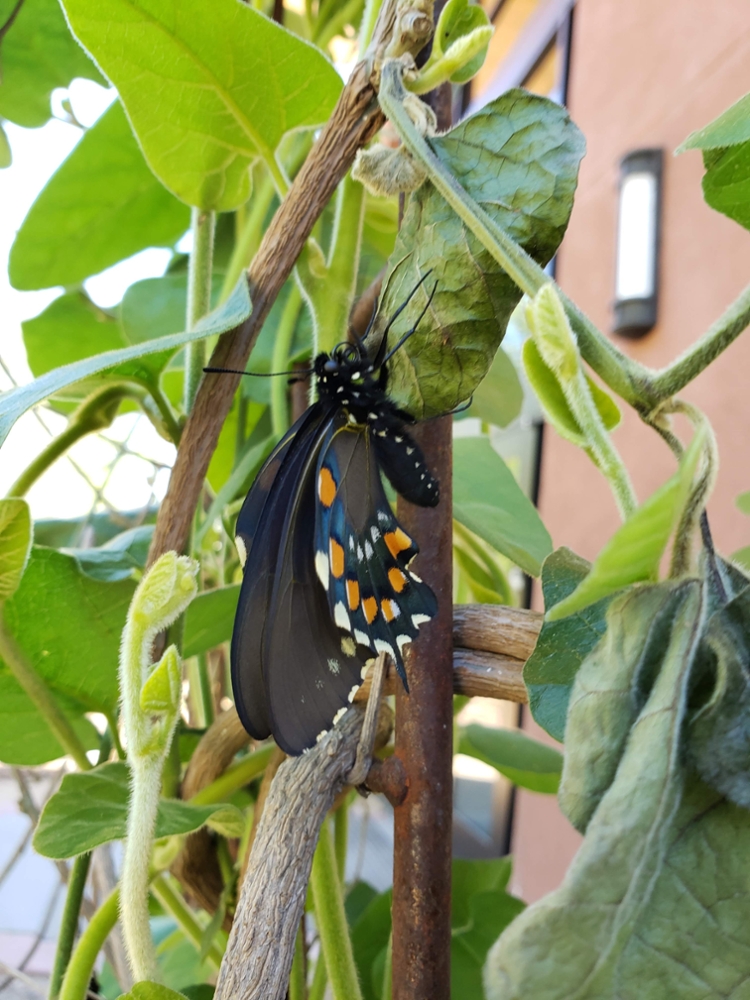
The butterflies need a flat upright surface to cling to while their wings expand, so rocks, trees, walls, porches, concrete freeway supports, or anything else that works is what the caterpillars seek. Still, this doesn’t explain why they feel compelled to travel from the plants they feed on to some other place that can be quite a long trip for such a small creature. It also doesn’t explain why they try to blend in with their surroundings. They’re still poisonous during the pupation stage. In fact, I found a dead, blackened praying mantis on my porch and I suspect it ate one of the pupating pipevine caterpillars. You’d think the caterpillars would give some warning – “Trespassers will be sorry!”
Not all of the caterpillars travel, of course – we’ve spotted the chrysalises on the Dutchman’s pipevine at the museum. It’s much more common, though, for them to move off and attach themselves to something else, which is no doubt what all the caterpillars who came before them did. And of course, non-poisonous caterpillars need to disguise themselves, especially when they’re at their most vulnerable, so the pipevines are probably just doing what their ancestors have done for thousands of years. Families tend to follow the same behavior patterns even when it doesn’t seem to make sense to outsiders!
However, there must have been an evolutionary advantage to travel. The caterpillars in my neighborhood may seek the houses here because of the many flowering plants in our yards. That wouldn’t hold true in Bidwell Park, though. It’s possible that the big reason for moving away from where they grew up is about trying to maximize genetic diversity. Even a few hundred yards could mean the emerging butterflies would encounter other butterflies with slightly different genes. This usually results in critters more able to adapt to changing circumstances. Since change always happens, this is a good thing!
Perhaps someone has done a study on this. If not, it could make a great research project. Of course, fitting caterpillars with tiny tracking devices would be an incredible feat in itself. LOL!
Stay Tuned to This Channel!
by Jackie Howland
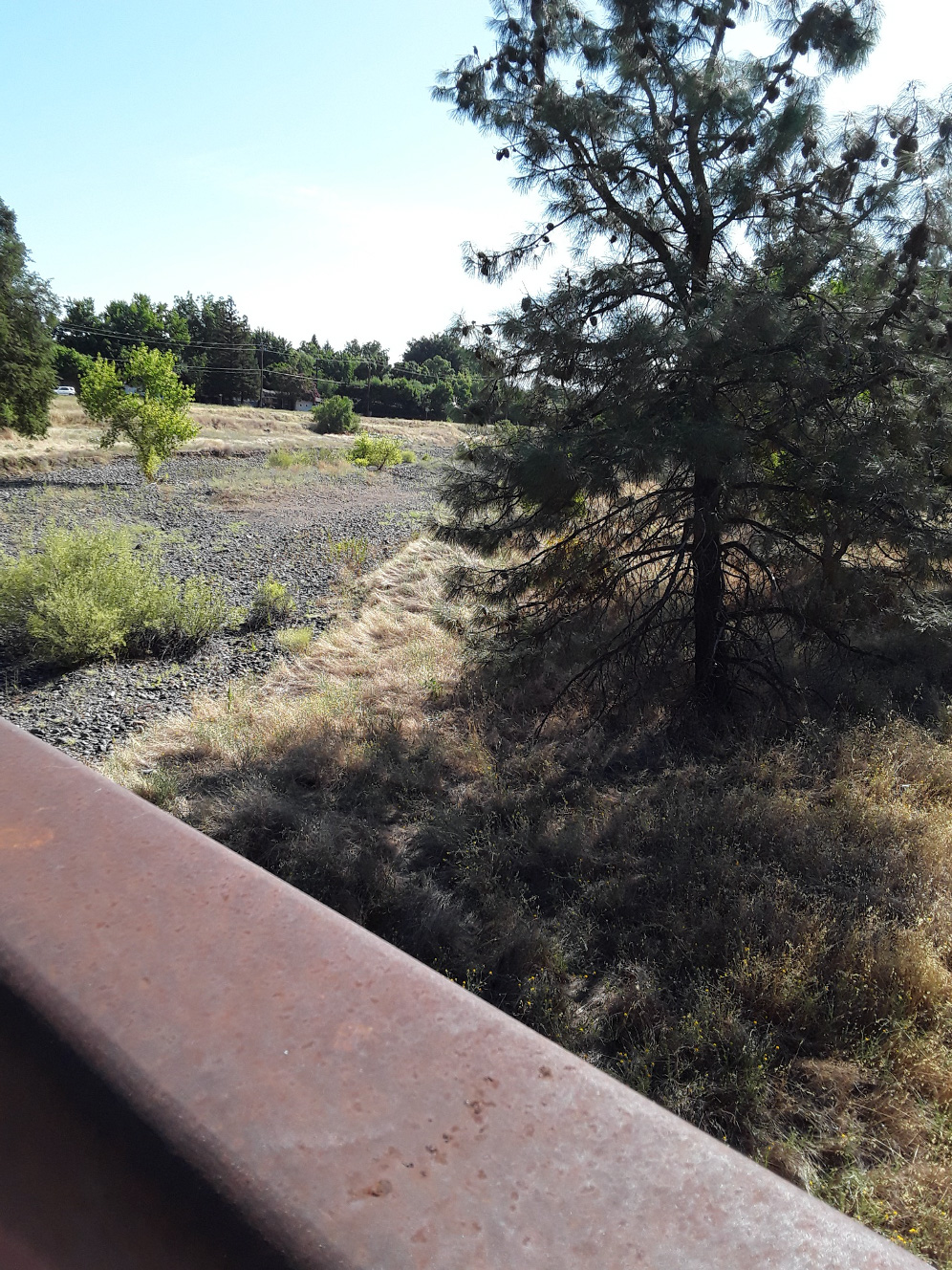
I mentioned before that I live near the Lindo Channel, so I thought I’d write about this amazing waterway. If you visit it during the dry season, you might well wonder why I call it a waterway! During wet seasons, though, it can get quite full, serving its purpose as a diversionary channel to carry excess water away from the main part of Chico. The reason I like it so much, however, is that it provides food and shelter for wildlife, so quite a few species make it a home base. Many birds not found in other areas of the city, such as quail, shelter there, and I even saw several deer racing along the side opposite to me one morning. I also had the special experience of seeing a hawk on the ground after it made a kill, right outside my bedroom window! I was filled with awe and gratitude as I watched this magnificent bird no more than ten feet away.
The Lindo Channel runs from Five Mile all the way to the Sacramento River, and while it is dry much of the year, many plants alongside and in the channel are able to tap into the water that lies below the surface. When you have plants, you can have the rest of the food chain. Well, and of course, some of the nearby residents such as me put out birdseed and water too! I really enjoy seeing the finches, nuthatches, titmice, and different types of sparrows among others that all congregate during the winters.
The channel attracts people too, and I often see them on the many trails that have been made over the years, at least on the eastern side of the freeway. The channel is wider and more open in the section between Five Mile and the freeway, with plenty of gravel keeping more plants from growing. The more western part of the channel is narrower and more densely packed with vegetation, so it’s not so hospitable for humans. The Park rangers have jurisdiction over the channel and I frequently see their trucks driving by my house.
I’d been under the impression that this waterway was not created by nature, but a little research set me straight. That’s why good sources of information are so important!
The Lindo Channel was originally called Sandy Gulch, an offshoot of Big Chico Creek. The channel has been altered by humans over the course of many years, partly for flood control and partly because of commercial operations. Much of the gravel that went into constructing Highway 99 was taken from the Lindo Channel.
Big Chico Creek, as you most likely know, runs through Bidwell Park and Chico State as well as many neighborhoods. This creek runs year-round and is highly prone to overspill its banks during heavy rains. To alleviate this, dams at Five Mile and One Mile were constructed along with a weir near Five Mile.
“What’s a weir?” you ask. Well, it’s a kind of weird dam. No, really, it’s a special type of dam, often with rectangular or triangular openings to allow a certain amount of water through. It may also be a low dam that allows water to flow over it during high water volume times, such as the rainy season. Because of the human intervention at and near Five Mile, water flows down the Lindo Channel when we’ve had enough precipitation.
This isn’t just about the rain in the valley. It’s also about what’s going on in the foothills. Rain or snow in Paradise and Magalia or higher up can eventually reach the channel and set it flowing. In fact, a few days after the Campfire devastated Paradise, I noticed water flowing in the channel. Since it hadn’t rained for at least six months at that time, I realized it had to be run-off from the fire fighting efforts.
As with just about anywhere, both native and non-native species of plants grow in the channel. Can you identify which ones of these are not native to the US? And which one is native to the US, but not native to our area? You might recognize this one from our recent exhibit of California wildflowers. Also, if you can identify the one that looks like a cross between a clover plant and a pea, please tell me. I’ve been wondering for quite a while!
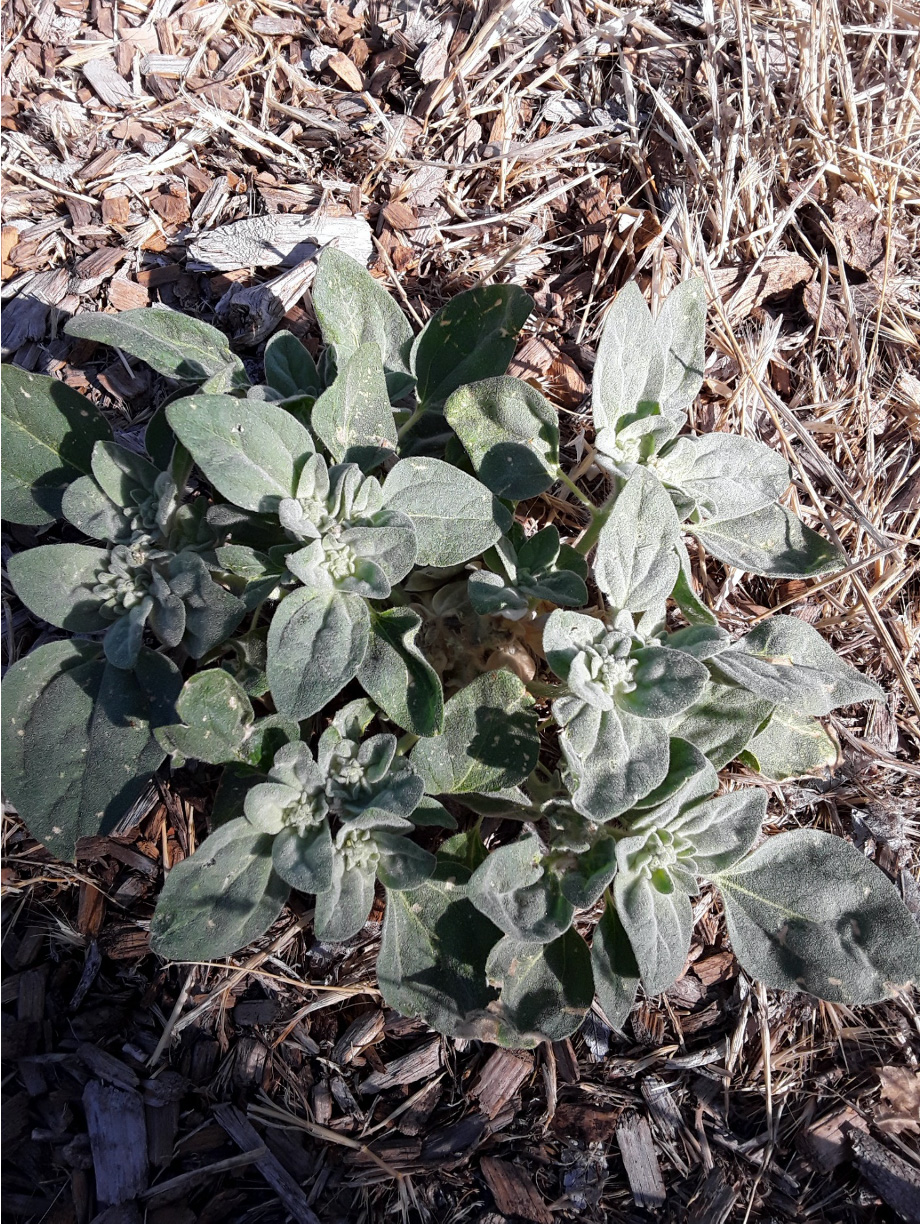
Turkey mullein (Croton setigerus)
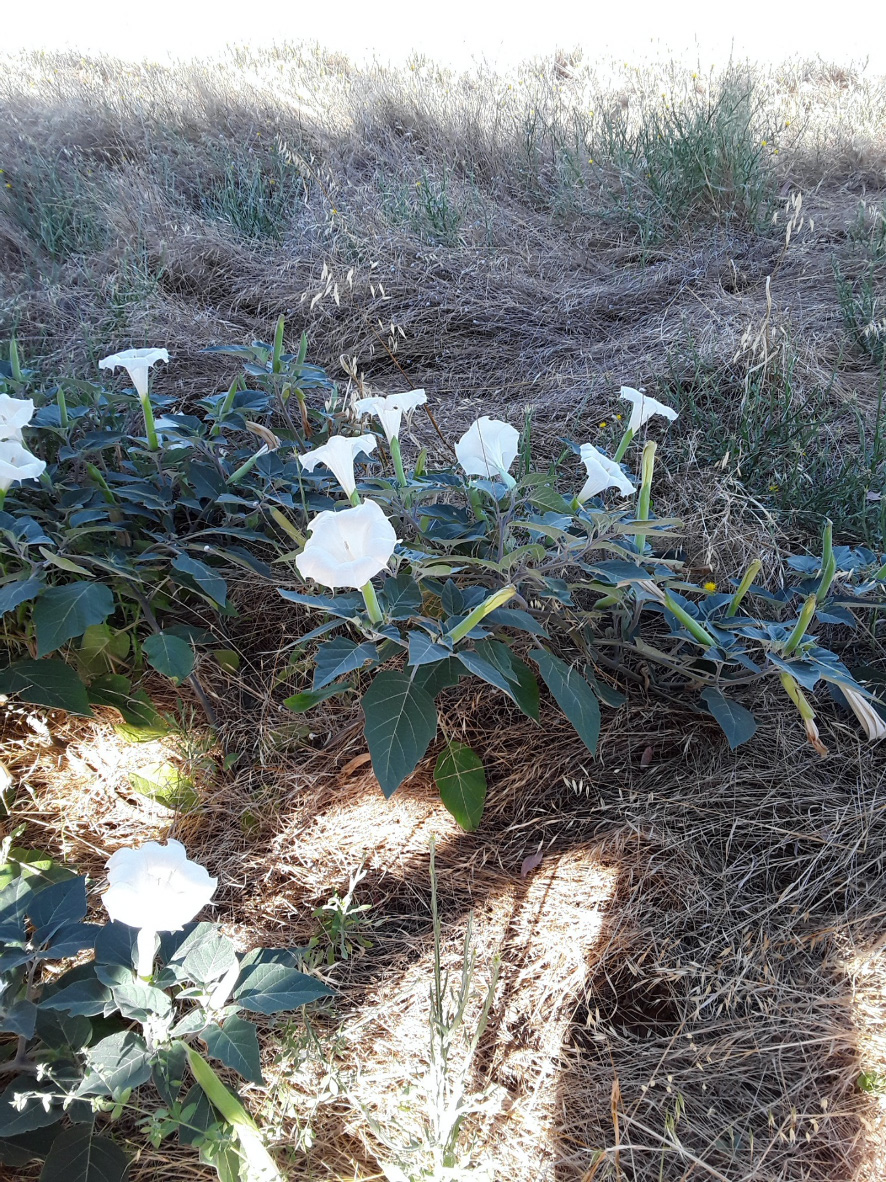
Jimsonweed (Datura wrightii)
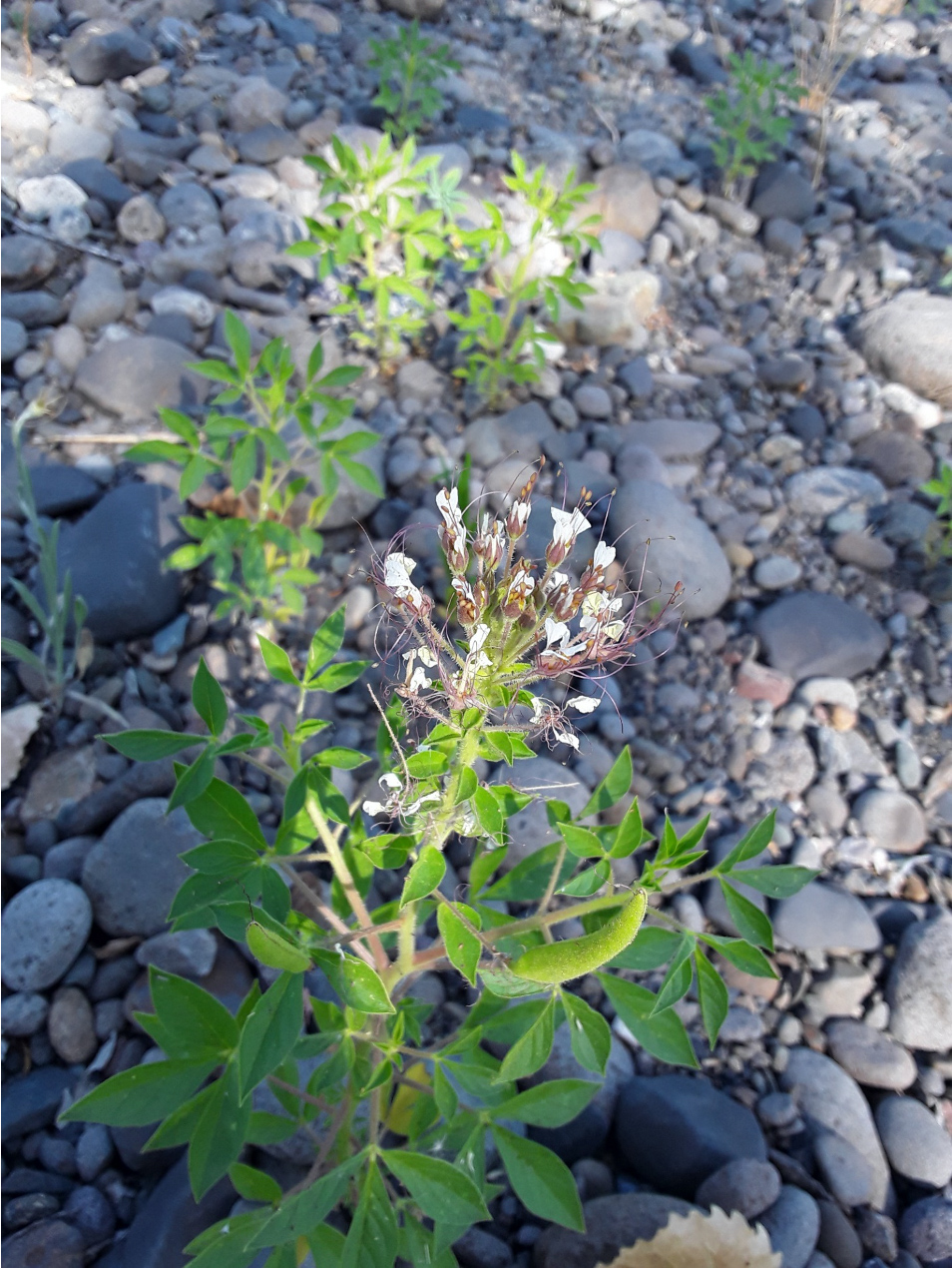
Clammyweed (Polansia dodecandra)
